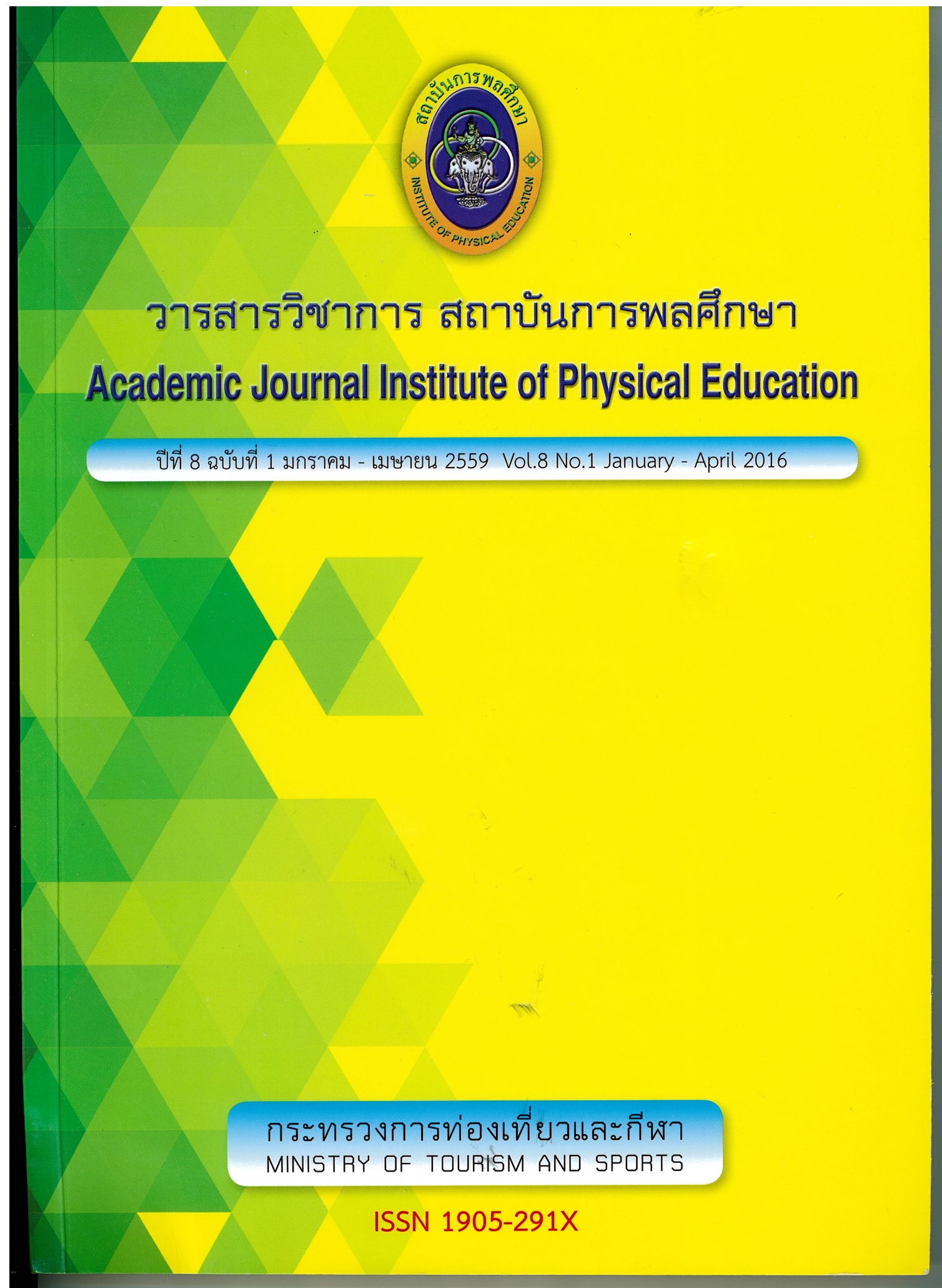Scoring Rubrics Construction of Judo Skill for Undergraduate Students of Kasetsart University
Main Article Content
Abstract
The purpose of this research was to construct the scoring rubrics of Judo skills for Kasetsart University students. The scoring rubrics of Judo skills, include 3 skills: 1) Falling skills (Ukemi-Waza) of 14 techniques, 2) Throwing skills (Nage-Waza) of 4 techniques and
3) Holding skills (Osae-Waza) of 3 techniques. The 21 total techniques rubrics were constructed by the researcher. Content validity, the index of consistency of Rovinelli and
Hambleton, was assessed by five experts. Twenty participants performed and were recorded on video clips and within one week participants were retested. For test-retest reliability, the Pearson product moments correlation was reported.
This research finding showed that the scoring rubrics of Judo skills had content validity (IOC = 0.86-1.00) and had good to excellent reliability In conclusion, the scoring rubrics of judo skills for Kasetsart University students are adequately valid and reliable for assessing Judo skills for undergraduate students of Kasetsart University.
Article Details

This work is licensed under a Creative Commons Attribution-NonCommercial-NoDerivatives 4.0 International License.
The published article is a copyright of the Academic Journal of Thailand National Sports University. The passage appeared in each article in this academic journal is a perspective of each author which is not related to the journal. Each author is required to be responsible for all components of his/her own article. If there are any mistakes, each author must be responsible for those mistakes on his/her own.
References
กรรวี บุญชัย. (2553). สมุดบันทึกกิจกรรมการเรียนรู้ วิชาการวัดและการประเมินทางพลศึกษาขั้นสูง, กรุงเทพฯ : มหาวิทยาลัยเกษตรศาสตร์, 86-87.
กองบริการการศึกษา. (2555). คู่มือหมวดวิชาศึกษาทั่วไป มก. (ออนไลน์), แหล่งที่มา: http://eduserv.ku.ac.th/data curri/gen- ed/2555/manua/doc GenEd/std gened.pdf. 17 ธันวาคม 2557
บุญเรียง ขจรศิลป์. (2543ก), วิธีวิจัยทางการศึกษา, พิมพ์ครั้งที่ 5, กรุงเทพฯ : พีเอ็นการพิมพ์, 35-172.
บุญเรียง ขจรศิลป์. (2543ข), เกณฑ์การประเมิน (Rubric Assessment), วารสารศึกษาศาสตร์ปริทัศน์. 15 (2), 75-83.
บุญส่ง โกสะ. (2547). การวัดผลและประเมินผลทางพลศึกษา, กรุงเทพฯ : สํานักส่งเสริมและฝึกอบรมมหาวิทยาลัยเกษตรศาสตร์, 10-102.
พรรณี ลีกิจวัฒนะ. (2551). วิธีการวิจัยทางการศึกษา, พิมพ์ครั้งที่ 3, กรุงเทพฯ : สถาบันเทคโนโลยีพระจอมเกล้าเจ้าคุณทหารลาดกระบัง, 105-143.
วรศักดิ์ เพียรชอบ. (2548), รวมบทความเกี่ยวกับปรัชญา หลักการ วิธีสอน และการวัดเพื่อประเมินผลทางพลศึกษา, กรุงเทพฯ : จุฬาลงกรณ์มหาวิทยาลัย, 1-2.
สุรีย์ แก้วเศษ. (2553). รูปแบบการพัฒนาครูในการประเมินตามสภาพจริงวิชาพลศึกษา ระดับมัธยมศึกษา วิทยานิพนธ์ศิลปศาสตรมหาบัณฑิต สาขาพลศึกษา, มหาวิทยาลัยเกษตรศาสตร์, กรุงเทพฯ, 233.
Jonson, A. and G. Svingby. (2007). The use of scoring rubrics: Reliability, validity and educational consequences. Education Research Review, 2(2), 130-144.
Kirkendall, D. R., J. J. Gruber and R. E. Johnson. (1980). Measurement and Evaluation for Physical Education, lowa : William C. Brown, 54.


